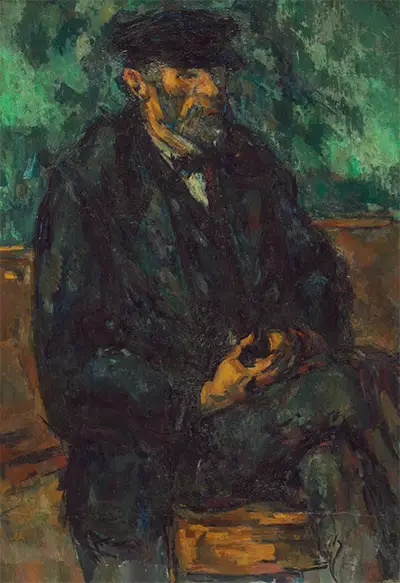Paul Cezanne did six portraits of his gardener, Vallier, at his house located in near Aix-en-Provence. This was among the last of his paintings before he passed on in October of the same year. Paul Cezanne still remains a great figure in art because of his intense portraits, radiant landscapes and complex still lifes.
Paul Cezanne created this masterpiece in the summer and autumn period of 1906. He had a liking for painting women and men of middle aged and beyond even though he liked the company of the younger people. In 1902, Cezanne told Jules Borely, “It is in the eyes of people of my own age that I see the past once more. Look at the old man who owns that cafe, sitting on his doorstep under that spindle tree. What style!” He developed this liking because he fell in love with the patina that time gave him. Vallier often posed for him, mostly wearing his sailor’s or straw hats.
Techniques
Paul Cezanne utilised broad but dynamic brushstrokes with somber, dark tones in the blues and the greens. The archetype of old age is vividly brought out in the painting by Cezanne’s ability to depict Vallier’s solemn pose plus his slightly overwhelming facial expression. The shade of the colours used and the brushworks could vividly portray the reflections of slight shifts in Cezanne's perspectives.
The fact that Cezanne was able to combine such elements into one sort of unified art was a huge driver in the development of the Cubism style of art. His search for some form of empirical truth in painting that led to him perceiving the lacunae and imbalance was very instrumental in his enabling him capture the instantaneity of his vision which called to attention the aspect of dimensionality of space on the canvas. The materials used were oil based paints on canvas.
Influences
Paul Cezanne was an instrumental bridge between the late 19th century and 20th century new line of artistic inquiry. Not only did he have a hand in this transition but also played a pivotal role in influencing the Cubism movement portrayed by his repetitive and exploratory brushworks which was key in conveying his intensity in studying his subjects. His passion in the movements saw him influence and inspire artists like Picasso and Matisse who referred to Cezanne as "...the father of us all."
Some of his greatest inspirations and influences on his works were from significant figures in the history of art. Painters like Claude Monet, Auguste Renoir and Camille Pissarro among others helped Cezanne develop his painting styles especially in en plein air.




